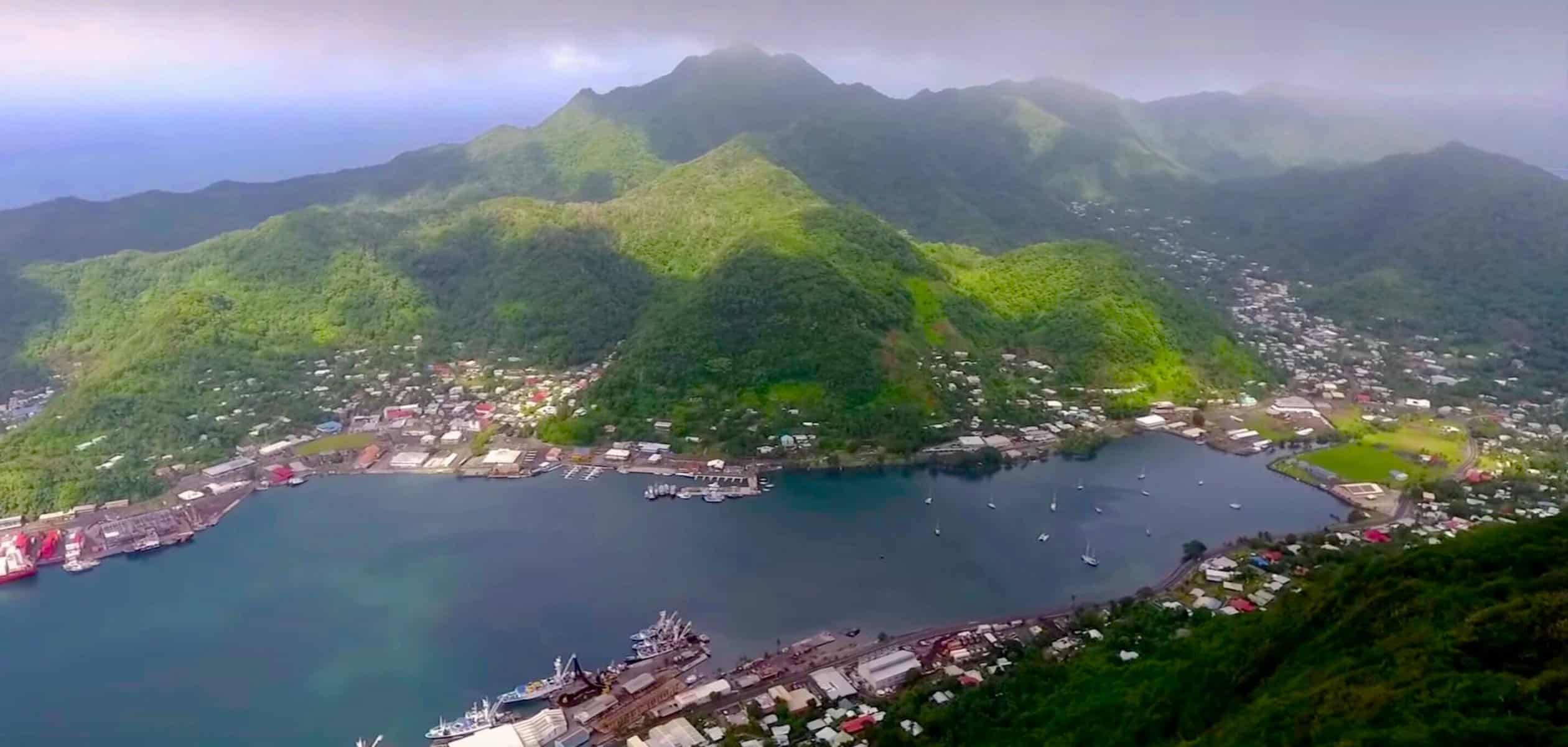Across the globe, climate change is altering the way people look at the world. Adjusting to shifts in economic drivers is now the norm, as access to natural resources becomes more limited and coastal infrastructure is often diminished. Many nations experiencing the impacts of climate change are responding by relocating to inland areas and identifying new target resources. However, for island nations in the Western Pacific, land and resources are limited. Without the ability to move inland, perform indigenous and cultural practices, and/or pursue traditional food sources through local fisheries and agriculture, many of these Pacific Island nations have nowhere to turn.

The Western Pacific Regional Fishery Management Council has jurisdiction over the federal waters of Hawai’i, American Samoa, Guam, the Commonwealth of the Northern Mariana Islands and the U.S. Pacific Remote Island Areas. The implications of climate change affect these islands in the Western Pacific with a higher degree of severity when compared to other regions in the world, such as the continental United States (Figure 1). For example, in American Samoa, climate-related changes are being observed through increased ocean temperatures and acidity, shifts in species distributions and ocean currents, reduced nutrient levels, and most immediately devastating, rises in sea level. Infrastructure in American Samoa is extremely vulnerable to sea level rise due to the steep terrain of its islands and relatively narrow coastlines. The situation is worsened by the recently recognized rapid sinking of the islands, triggered by the 2009 Samoa earthquake and predicted to last for decades. This subsidence is estimated to lead to roughly twice as much sea level rise by 2060 as what was already predicted from climate change alone. According to University of Hawai‘i Sea Grant, American Samoa faces a total relative sea level rise of 0.8-1.4 m (2.6-4.6 feet) by 2100, which would severely impact the airport and low-lying coastal roads. Ultimately, these changes will affect insular and pelagic ecosystems and the communities that depend upon them.
As sea level continues to rise, coastal infrastructure and agricultural grounds will diminish, and communities will be pushed further up the mountainside. So where can many of these Pacific island communities turn? This question is especially relevant when considering employment in the tuna industry, specifically through the Starkist Samoa cannery, located at sea level in the Pago Pago Harbor. The cannery provides more than 80% of private employment for people in American Samoa, and also to many nationals of other Pacific Island countries and territories, particularly Samoa, Niue, Tokelau and Tonga. Tuna exports from American Samoa are valued at approximately $353 million per year, with canned tuna comprising 99.5% of the total. Loss of this industry due to the implications of climate change would be devastating to American Samoa and the communities it supports.
Recently, members of the American Samoa Resilience Commission met with the U.S. Government Accountability Office to discuss climate change in the islands. Director of Marine and Wildlife Resources and Commission Co-chair (and former Council Chair) Taotasi Archie Soliai shared the Commission’s mission: “American Samoa recognizes the urgency of climate impacts with grave concerns and the need to respond quickly and strategically to ensure the protection, adaptive capacity, resilience, and well-being of the islands and residents of American Samoa.” Following, Acting Governor Talauega Eleasalo Ale said the quarterly meetings of the Commission allow and ensure immediate accessibility for government leaders to address issues. “As a small island in the middle of the ocean, we feel the effects of climate change every day. We see it in the rising tides, and we feel it in the increased heat in the day. We are mindful of the constant change, and have refocused our efforts through this commission.” A main point highlighted in the discussion was the lack of a fair playing field when island territories compete against states for federal funding.
Fortunately, on Nov. 15, 2021, President Biden signed the Bipartisan Infrastructure Law, recognized as the largest long-term investment in the Nation’s infrastructure and economy in history. It provides $550 billion over fiscal years 2022 through 2026. As of March 2023, this has translated into $68.6 million allocated for American Samoa including:
- $4.6 million to rebuild roads and bridges (~$24 million expected over five years)
- $50 million to provide clean and safe water and improve water infrastructure
- $1.7 million to bolster resilience against climate change and extreme weather events
- ~$3 million to repair and improve ports and waterways
o $850,000 to construct ferry boats and terminal facilities
o $2.1 million for Aunu‘u wharf reconstruction – the sole access point to the island
Much of the work focusing on climate resilient fisheries in the Western Pacific results from efforts led by the Council and NOAA with funding from the Department of Commerce. Collaborative efforts have led to the development of the Pacific Islands Regional Action Plan. It identifies priority needs and specific actions to implement the NOAA Fisheries Climate Science Strategy in the region.
NOAA hosts Annual Collaborative Climate Workshops to address the vulnerability of the islands in the Western Pacific Region. The goal of these workshops is to prioritize research needs and indicate how managers may respond to changing climate conditions in support of the Pacific islands and their communities. The next workshop is scheduled for fall 2023.
Council Resources on Climate Change:
Pacific Islands Regional Action Plan – https://tinyurl.com/3t49nd3f
Little Changes Have Big Impacts on Little Islands video – https://tinyurl.com/LittleChangesBigImpacts
- USGS. Sea-Level Rise Viewer for American Samoa: A Co-Developed Visualization and Planning Tool. Climate Adaptation Science Centers. Dec. 31, 2019. https://tinyurl.com/ASSeaLevelRise
- www.samoanews.com/local-news/sea-level-rise-growing-threat-here-american-samoa
- American Samoa Statistical Yearbook 2018 and 2019, American Samoa Department of Commerce. www.doc.as.gov/resource-center
- www.talanei.com/2023/01/23/gao-team-sees-impacts-of-climate-change-first-hand
- www.fhwa.dot.gov/bipartisan-infrastructure-law
- https://www.whitehouse.gov/wp-content/uploads/2023/03/American-Samoa-Fact-Sheet-March-Edition.pdf

